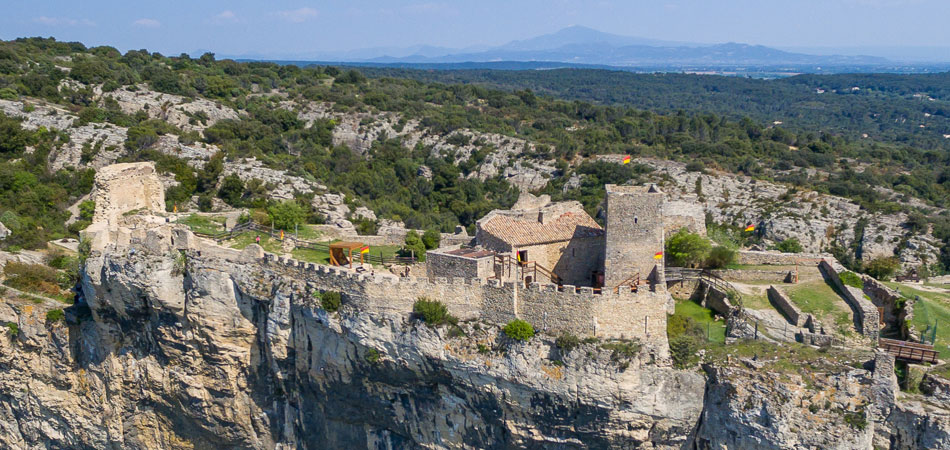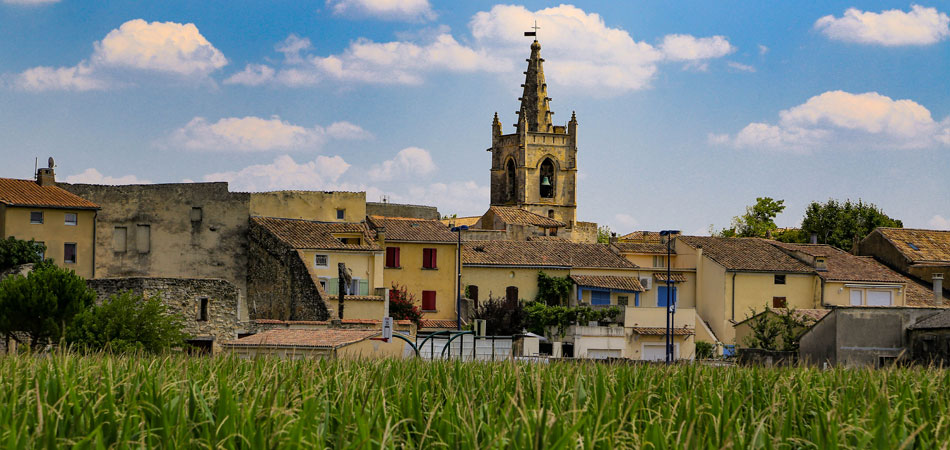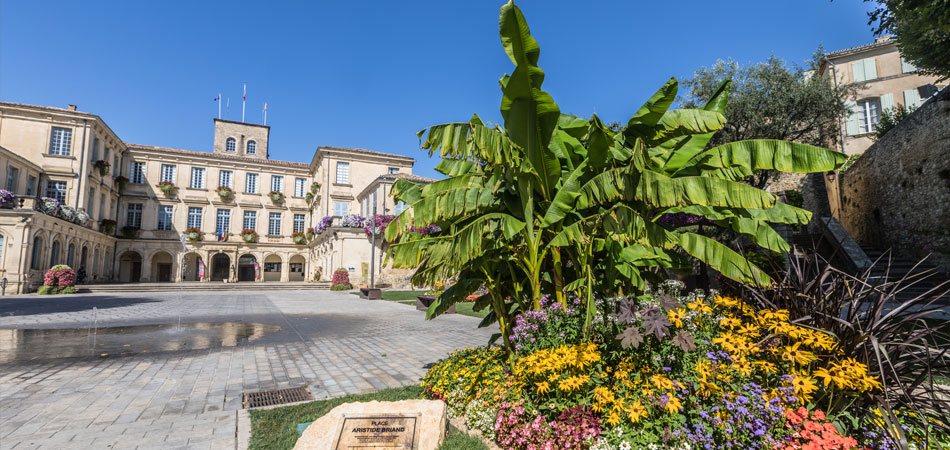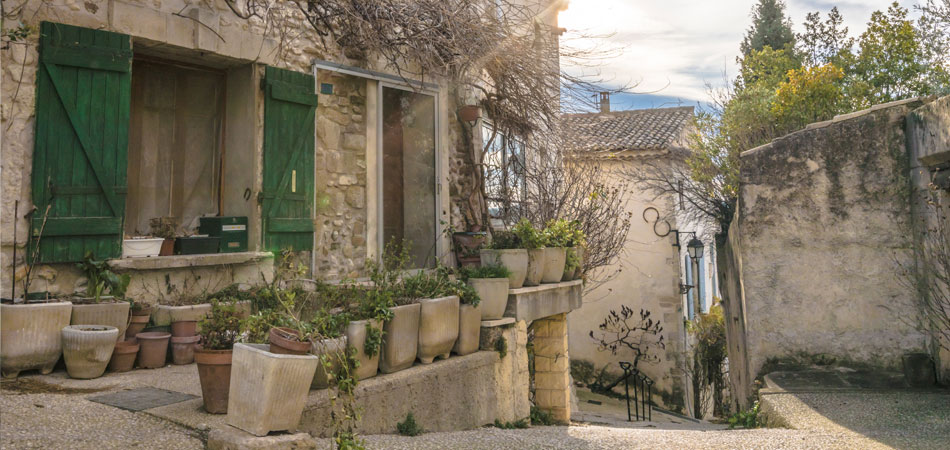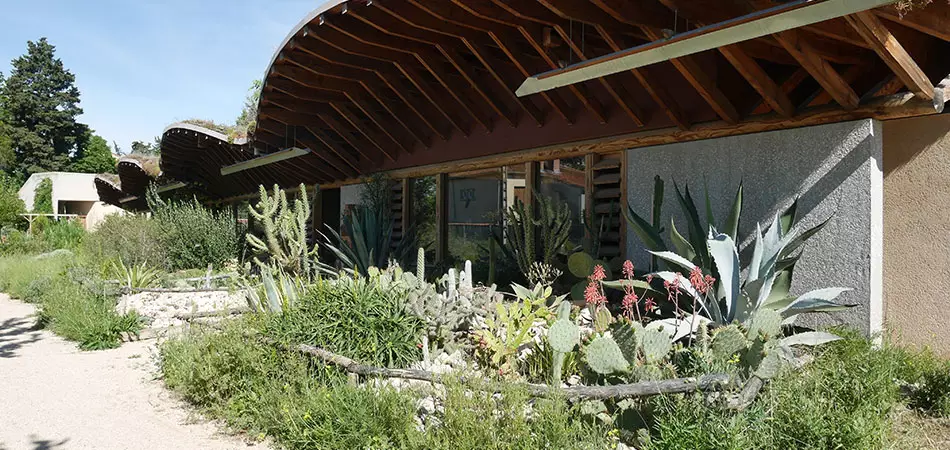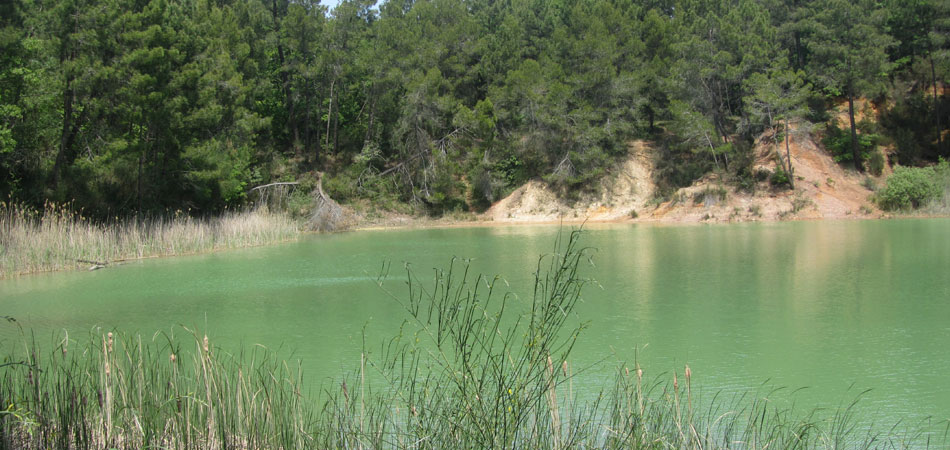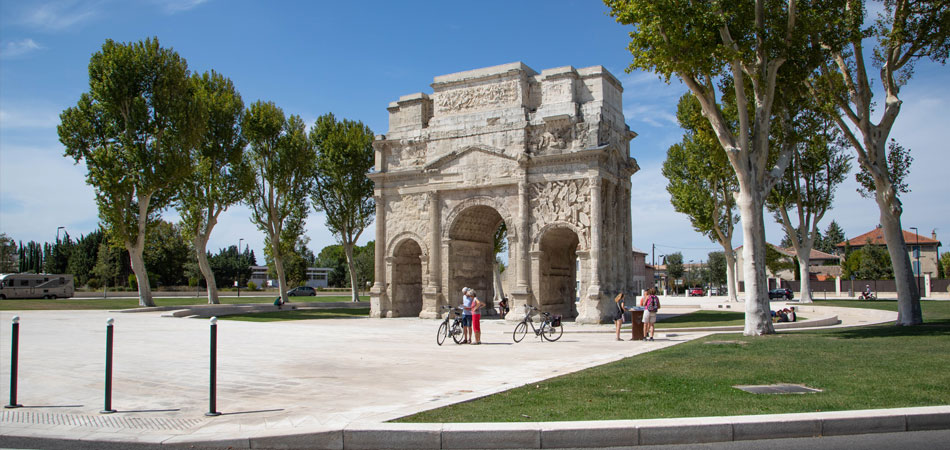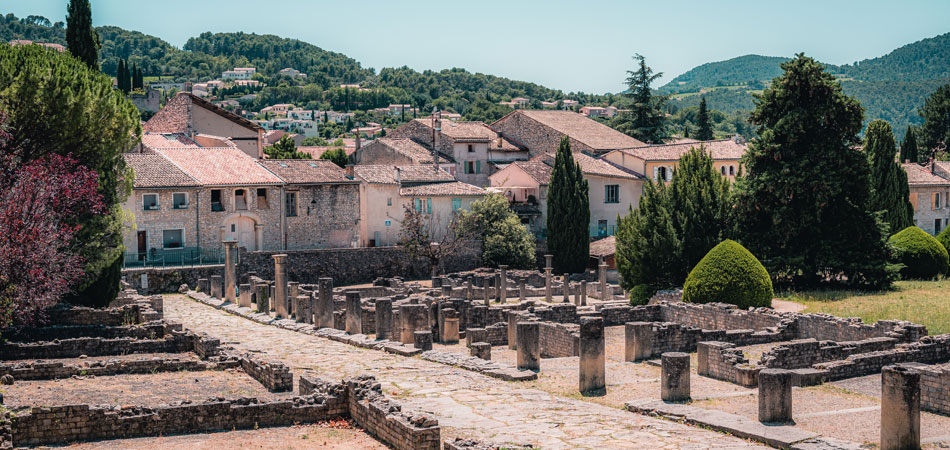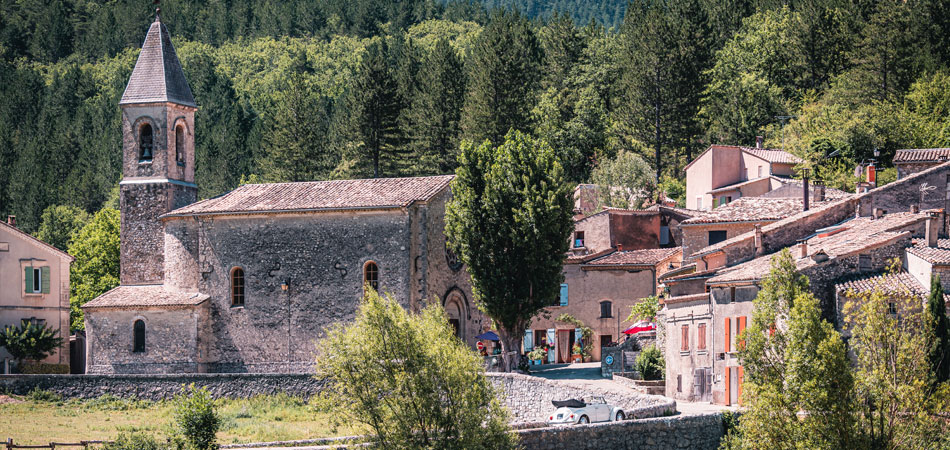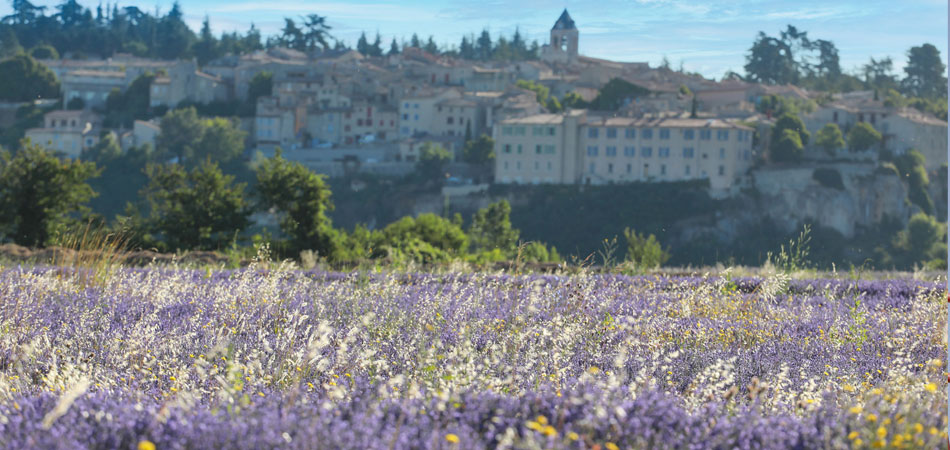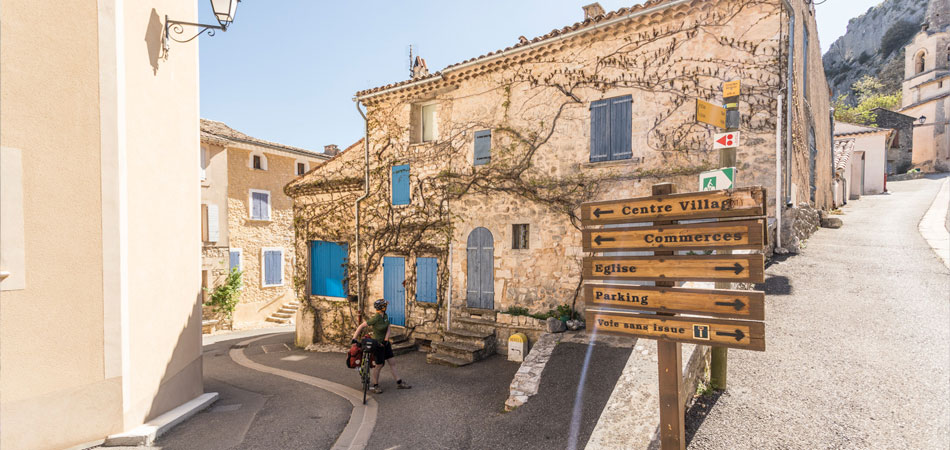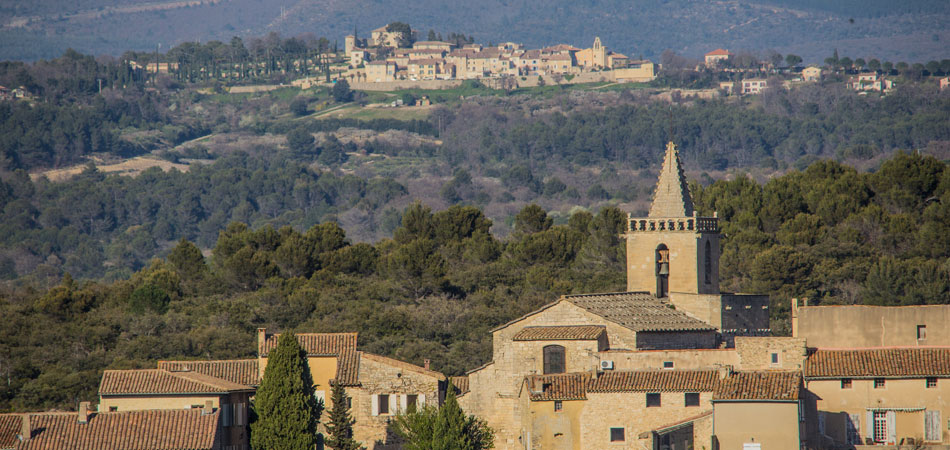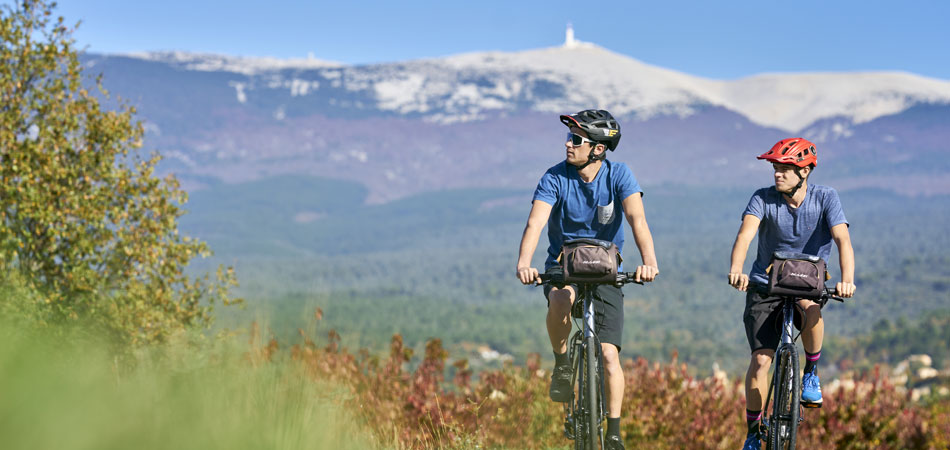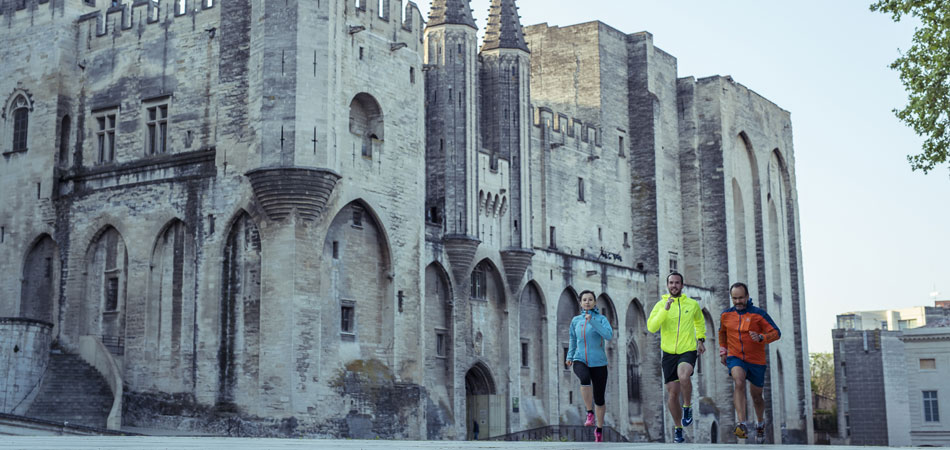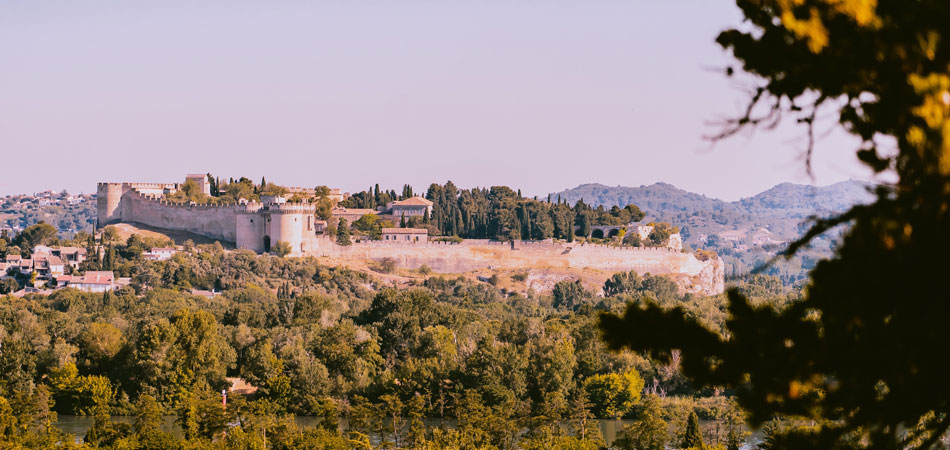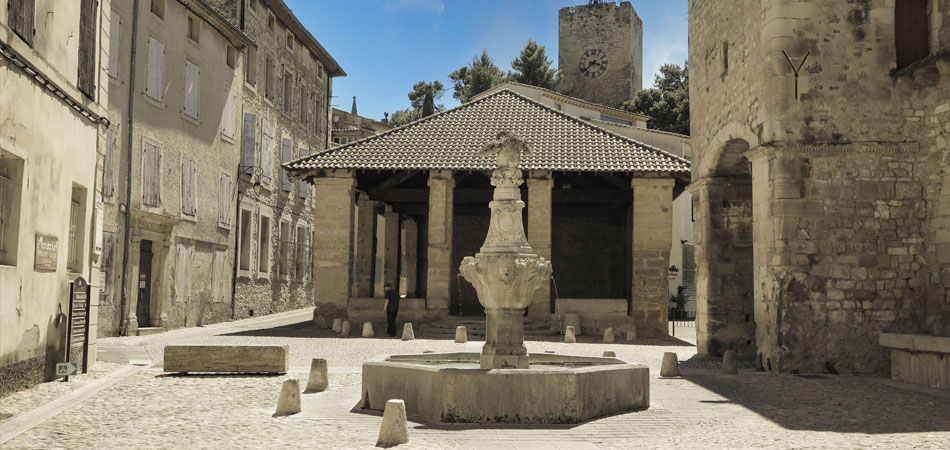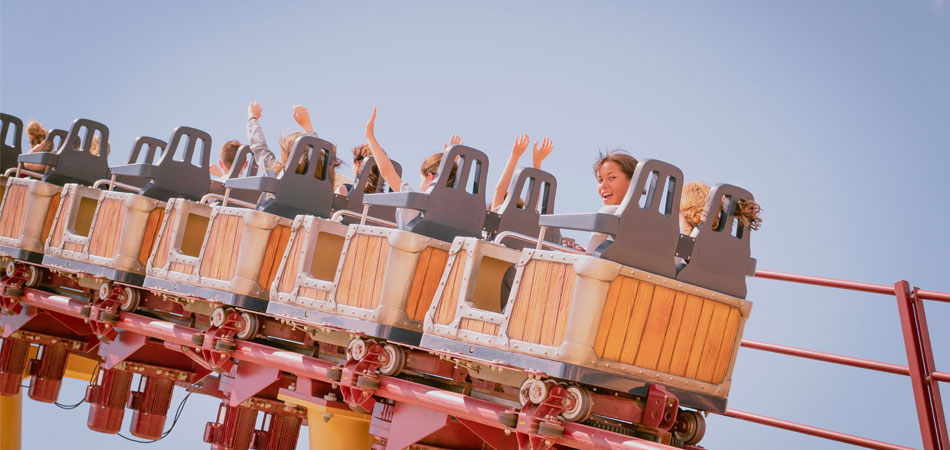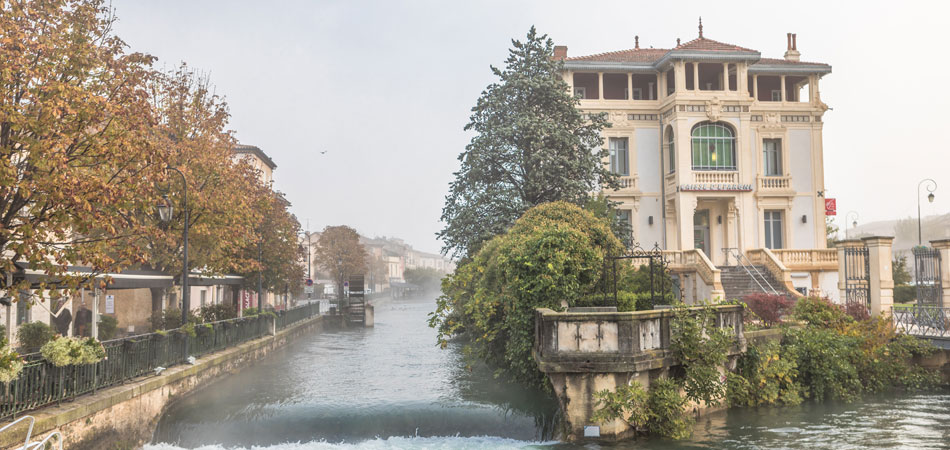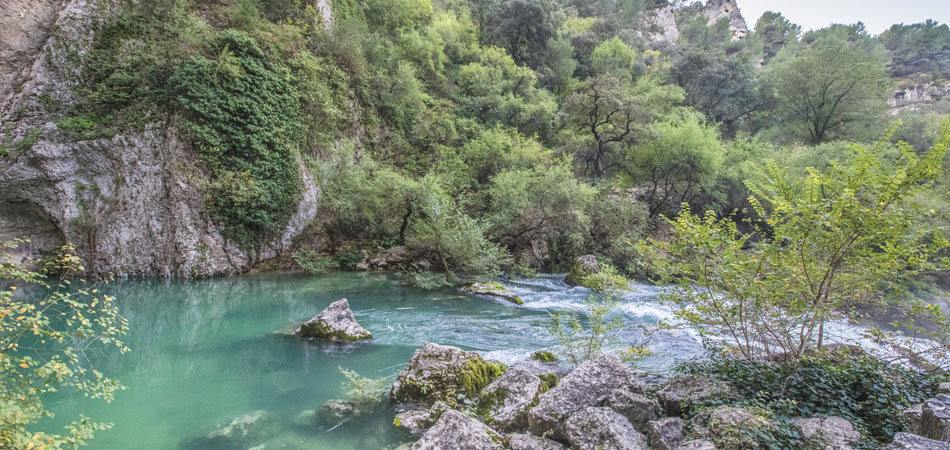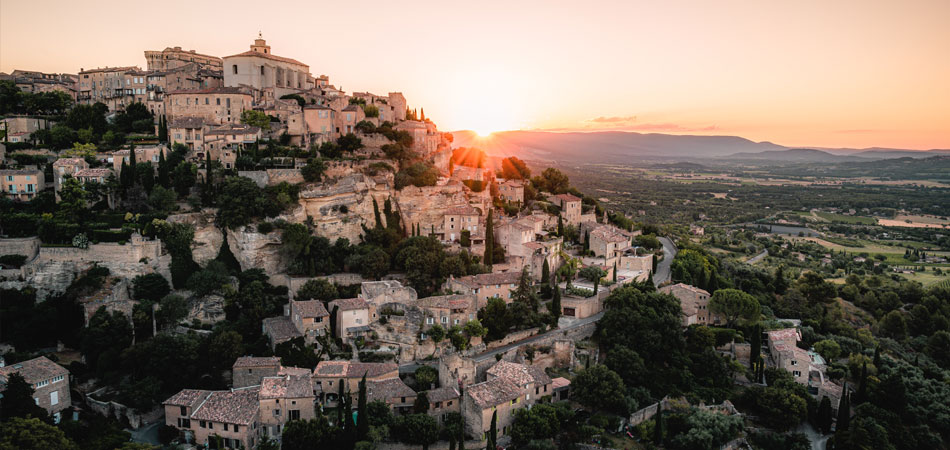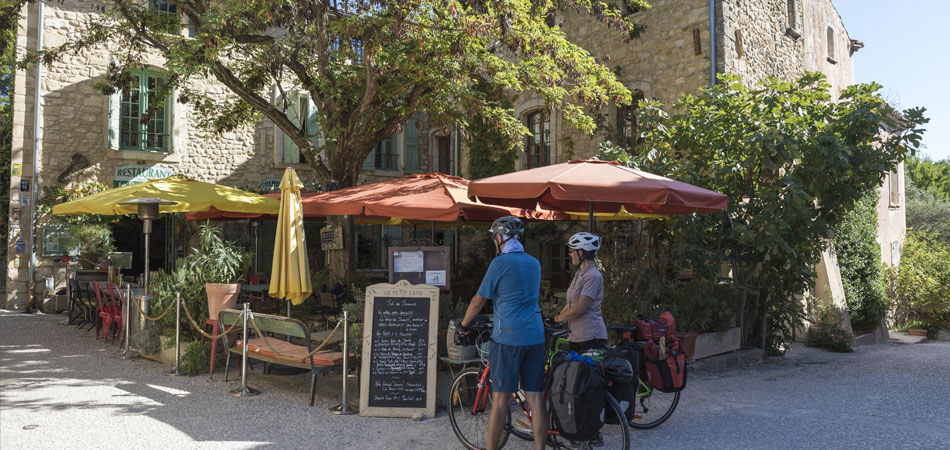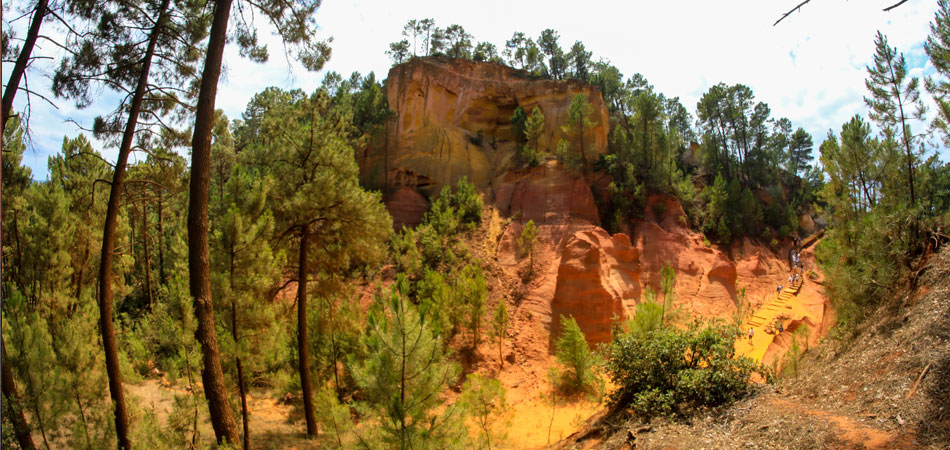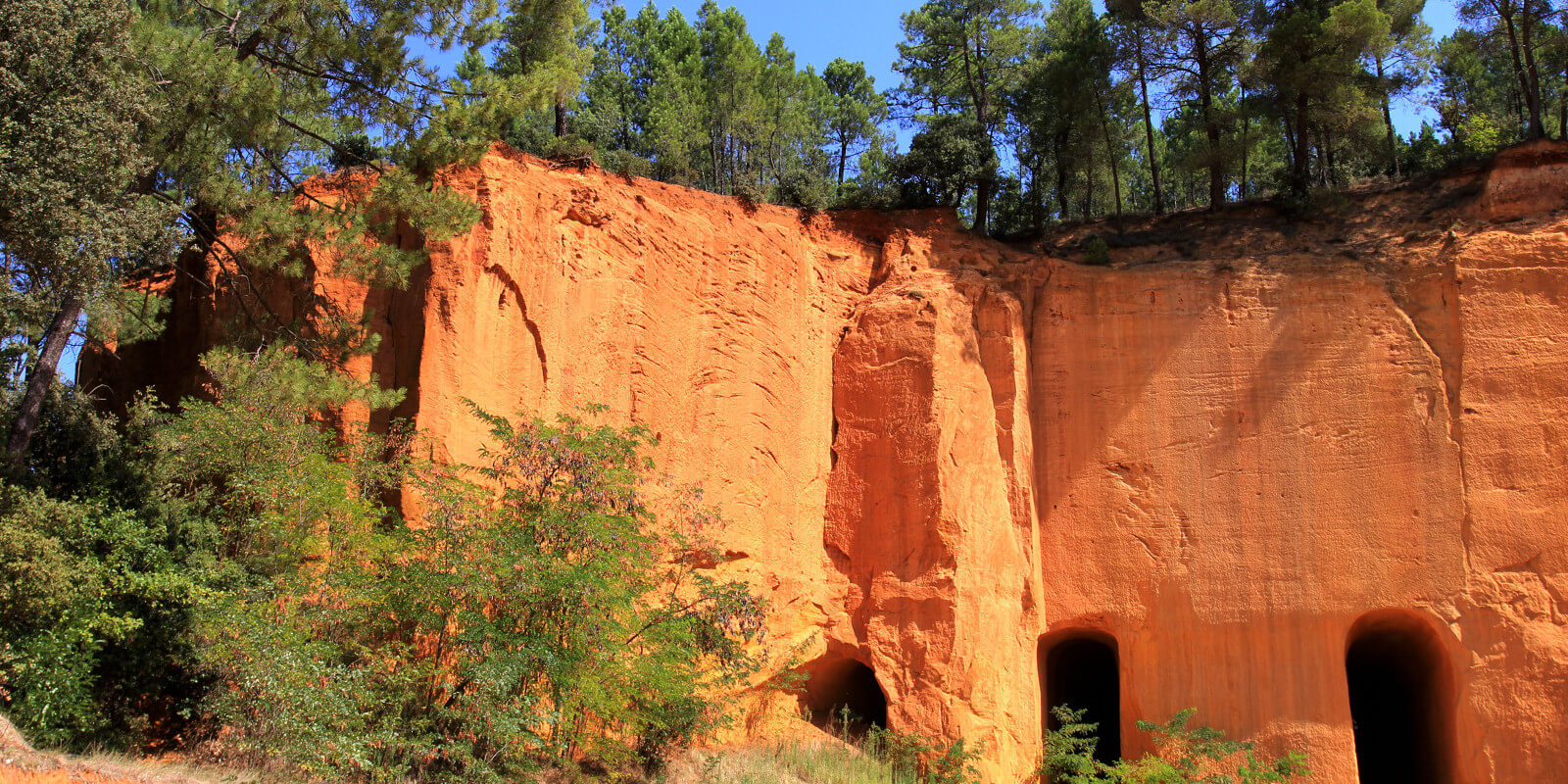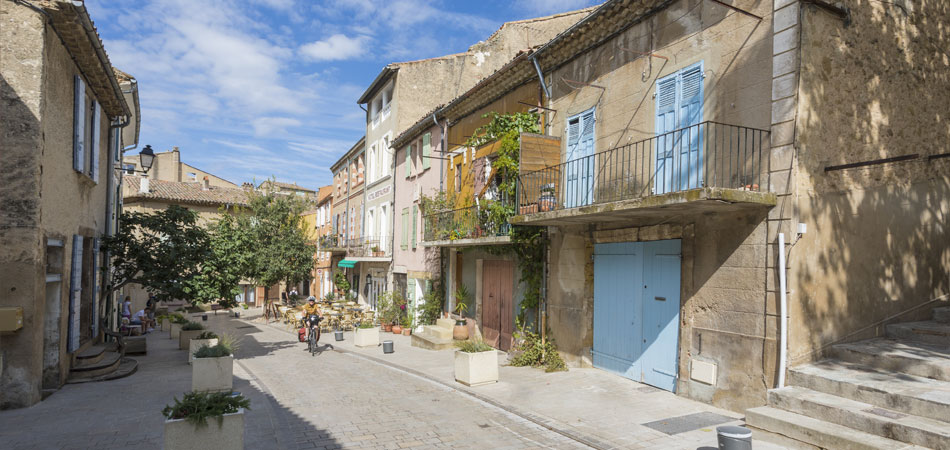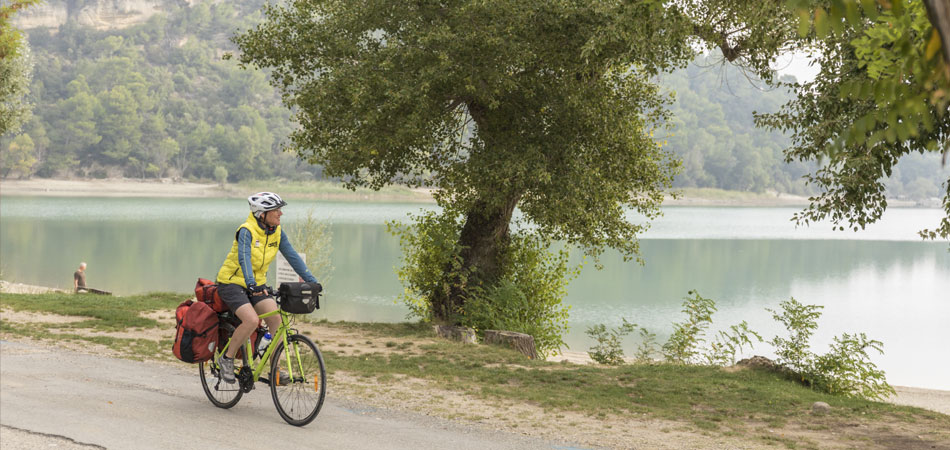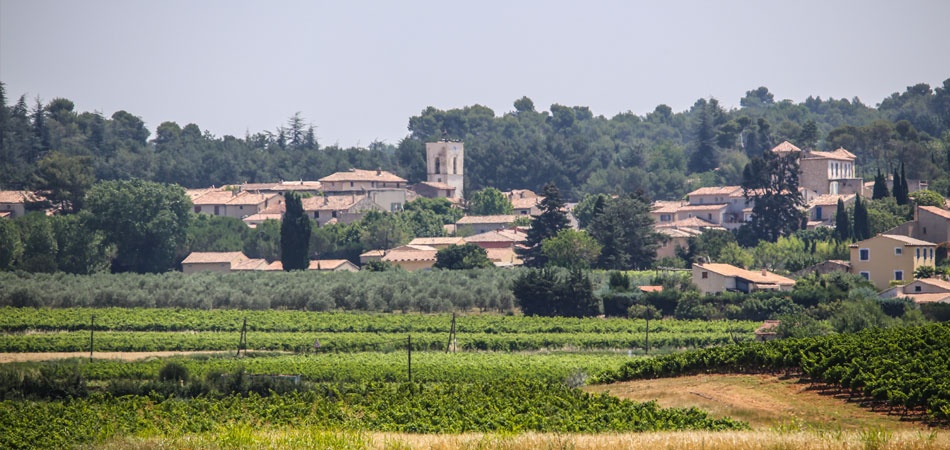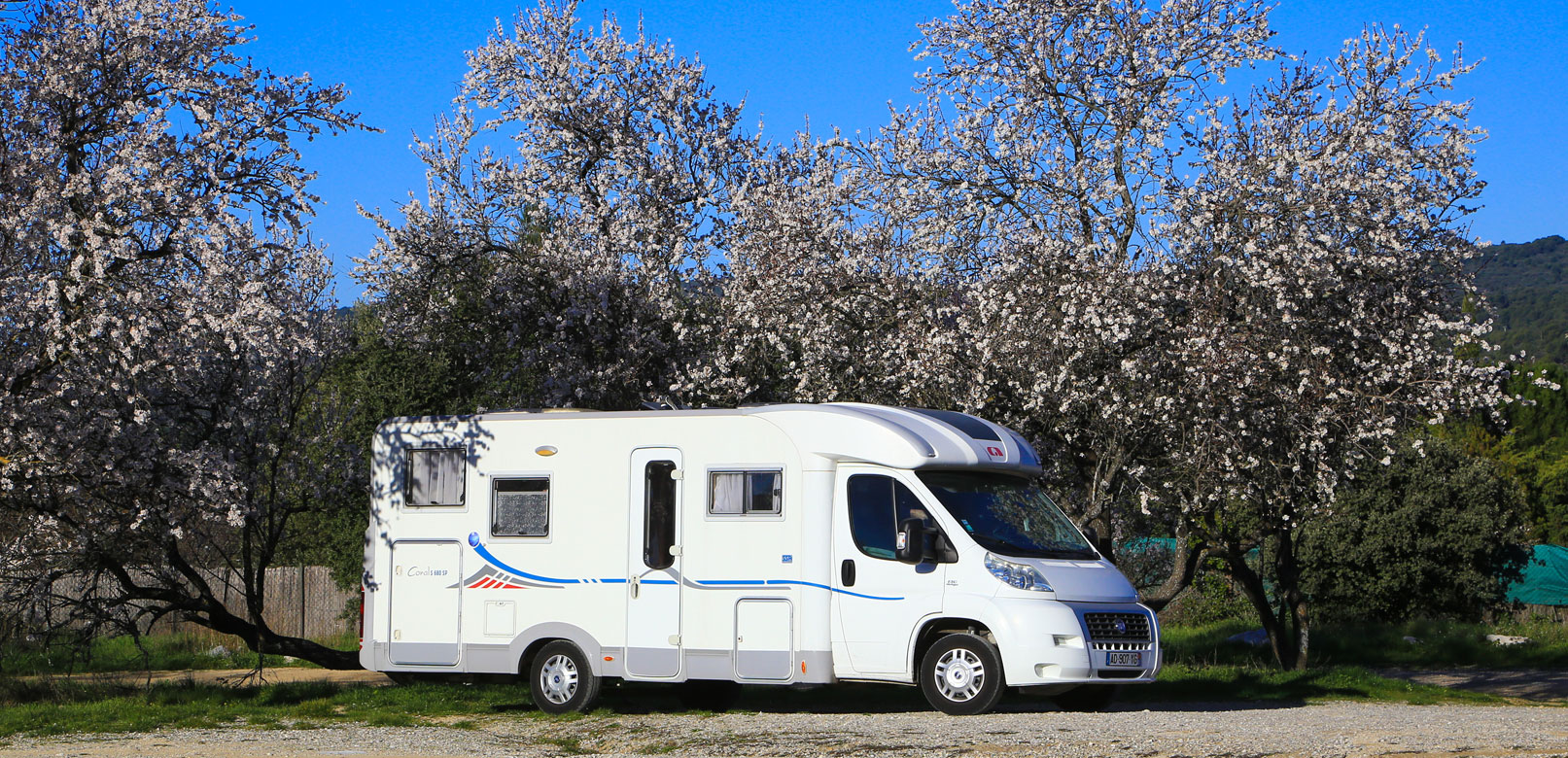
Vaucluse in a campervan
North to South in 13 stages
15 days
Bollène
Pertuis
This itinerary takes you along picturesque roads and off the beaten track from Bollène to Pertuis where, if the fancy takes you, the motorway awaits to whisk you away to further adventures.
A pause in Vaucluse with plenty of surprises in store
Download
Click here to download in GPX formatDeparture
Bollène
GPS coordinates
4,778759
44,29721
Day 1 – The Provençal Rhône
Lapalud, Lamotte-du-Rhône, Mondragon, Mornas
Bollène is perhaps best known for its historic Blondel dam, a hydroelectric power plant that produces green energy and is open to the public for guided tours.
The other villages nearby all have a fascinating legend to tell – from the slayed dragon of Mondragon to the military history of Mornas dominated by its medieval fortress.
Lapalud is the broom capital. Yes, you heard right, that corn broom found in houses all over the word is made here! Nowadays, all that’s left of its broom heyday are the faded painted advertisements on the sides of houses that lend an air of antiquated charm.
Useful addresses
- When in Bollène, you cannot leave without a trip to bakery and patisserie La Marquisette, not just for its old-school shabby chic feel we just love, but the cakes and other treats on display that sweet-toothed gourmets won’t want to miss!
- Nearest campervan service sites: Camping La Simioune
Day 2 – Popes’ Enclave
The “Papal Enclave” offers four cities to visit in one day!
When the department of Vaucluse was founded in 1793, the towns of Valréas, Grillon, Visan and Richerenches stayed loyal to the Comtat Venaissin, part of the papal states, forming a Provençal enclave in Drôme!
In June and July, visitors flock to marvel at the lavender, from November to March to sample the black truffles, and all year round for the gentle way of life in these stunning country towns.
This land was once the northern border of the papal states. And where there’s a border, there are border posts: the papal border posts make for a delightful trail that winds through vineyards, lavender fields and forest.
The old village centre of Richerenches was built on the site of an ancient Knights Templars commandery – the largest in Provence with 275 members during its heyday. Today, part of the complex houses a lovely truffle and wine museum.
Campervan sites
- Grillon : Camping le Garrigon
- Valréas : camping la Coronne, Camping CarPark
- Visan : camping l’Herein
Day 3 – Pays d’Aygues Ouvèze
A change of scenery and tranquil walks galore around 8 villages off the beaten track
Camaret-sur-Aigues, Lagarde-Paréol, Piolenc, Sainte-Cécile-les-Vignes, Sérignan-du-Comtat, Travaillan, Uchaux, Violès… places where the history unfolds along the legendary RN7 – familiarly known as “the holiday route” – that takes you through all varieties of crops and the vineyards of the Côtes du Rhône.
Nature lovers and insect enthusiasts will love Sérignan-du-Comtat where the home of the French father of entomology, Jean-Henri Fabre, L’Harmas, has been converted into a natural history museum, and Naturoptère, a living temple of plants and insects!
The Uchaux mountain range offers plenty of walking and cycling opportunities (a hike will take you to the ruins of the medieval castle in Castellas) affording panoramic views of Mount Ventoux, the Rhone Valley and the Orange plain.
Campervan sites
- Closest campervan sites: aire de la Grappe at Uchaux (in french)
Day 4 – Around Orange and Châteauneuf-du-Pape
Destination Orange, Caderousse, Châteauneuf-du-Pape, Jonquières and Courthézon
Keep following the path of the iconic RN7 through the heart of the famous Côtes du Rhône wine country, with the jewel in its crown, Châteauneuf-du-Pape, and plunge into Provence’s Roman history in Orange, where the Triumphal Arch and ancient theatre (the venue for the Chorégies opera festival for 150 years) are breathtaking remnants for visitors to admire.
Orange’s Roman theatre, Triumphal Arch and Saint Eutrope Hill have earned UNESCO World Heritage status.
It was in Châteauneuf-du-Pape that the very concept of AOC (controlled appellation of origin) was invented by winemakers keen to protect their name, their know-how and the quality of their wines. In 1936, Châteauneuf-du-Pape was named the first viticultural AOC in France!
Campervan sites
- Châteauneuf-du-Pape : camping l’’Art de Vivre
- Orange : Camping Manon
Day 5 – Around Vaison-la-Romaine and the northern slope of Mount Ventoux
Head away from Orange to enter Vaison-la-Romaine, where from Brantes to Séguret by way of Cairanne, and Savoillans to Buisson passing through Puyméras, Roaix, Sablet and Rasteau, a total of 19 villages and towns await you for a tour of the local history, hospitality and nature.
If Vaison-la-Romaine, with its ancient ruins and medieval upper town, and Séguret, classified as one of the most beautiful villages in France, might be the best known, the villages around also deserve a visit, some for their wine, others for their quaint houses and cobbled streets.
In Rasteau, known to Côtes du Rhône enthusiasts, they also produce a natural sweet wine, which has earned its own AOC and AOP quality labels. To enjoy (with moderation, of course) as an aperitif or dessert wine (it’s the perfect accompaniment to a red berry or cherry gateau, or even chocolate).
In Savoillans, the Land’Art and Nature trail is a fascinating and original way to explore the countryside. Amongst the trees are installations from artists who have given free rein to their vision of Ventoux.
Campervan sites
- Vaison-la-Romaine : camping Carpe Diem, camping du théâtre Romain
- Puyméras : camping de l’Ayguette
- Entrechaux : camping les 3 rivières
- Le Crestet : camping le Voconce
- Rasteau : domaine la Girardière
- Sablet : domaine de Parandou
Day 6 – The Southern Ventoux
Back on to the road to reach stunning Sault then across the plain to visit the enchanting villages of Villes-sur-Auzon, Mormoiron, Blauvac and Méthamis.
Here, life is not pink but lavender (especially in Aurel where the lavender fields are picture perfect): across the Sault plateau, on the plain, in orchards and vineyards, all bordered by unspoilt countryside including the Nesque River Canyons (Gorges de la Nesque) and its lush forest beneath the unmissable peak of Mount Ventoux. If you love the great outdoors and wide, open spaces, you won’t be disappointed!
At the Nesque River Canyons (campervanners beware: the road is punctuated by tunnels with a max. height of around 3 metres), the Rocher du Cire belvedere is a great place to stop. This promontory looks down over the canyons and affords unspoilt views of Mount Ventoux. You can also admire the stele inscribed with the Calendal poem by Frédéric Mistral and say hello to the tamed wild boar in the neighbouring property that sometimes come to the road to greet visitors.
In Monieux, the lake is a perfect spot to stop and cool down. While bathing is not permitted, fishing is, and surrounded by reeds, willows, poplar trees, green spaces and a children’s playground, this is a lovely site to relax those weary limbs!
Campervan sites
- Sault : Parking N°3 & Camping du Défends
- Villes sur Auzon : Camping les Verguettes
Day 7 – Plain of Comtat Venaissin
Before arriving to the plain, we’re guessing you may want to say hello to Mount Ventoux.
In Sault, follow the road as far as Chalet Reynard then up to the summit. From there you have a choice: head back down the northern slope towards Mont Serein and then Malaucène or return back on yourself to Chalet Reynard and descend to Bedoin and then on to Carpentras and the plain.
This region is awash with 25 towns and villages ready to be explored around the “Giant of Provence”, as Mount Ventoux is also known, from Venasque, ranked as one of the most beautiful villages in France, to Malaucène. Some are well known: Bedoin, Gigondas, Vacqueyras, Beaumes-de-Venise. Others less so: Suzette, La Roque-Alric, Beaumont-du-Ventoux, Loriol-du-Comtat.
But they all have one thing in common: they can’t wait to share their history with visitors! In addition to having a fascinating past, this is also the garden of France: Ventoux AOC wine country , strawberries in Carpentras, cherries in the Venasque mountains, asparagus in Mormoiron, figs in Caromb…
In Saint-Léger-du-Ventoux, the “Jardin Singulier” (unique garden) concludes the Land’Art trail from Savoillans. Here too one-of-a-kind and occasionally unusual artworks punctuate your forest walk. This is also the site of the Esprit des Lieux publishing house which has a lovely bookshop.
In Mormoiron, head to Les Salettes lake where you can have a dip while taking in views of Mount Ventoux. There’s plenty more to keep you occupied here: treetop adventure trail (Ventoux Aventures), hiking paths, an orientation trail and lakeside restaurant La Cahute for a well earned cold drink or hot meal. Everything you need for a family day beside the lake.
Campervan sites
- Top of mont Serein : Camping le Mont Serein
- Bedoin : camping Park, Camping la Garenne, Camping le Pastory
- Malaucène : camping Park
- Aubignan : Camping du Brégoux
- Carpentras : Aire municipale
- Beaumes de Venise : Domaine Bouletin (France Passion), Camping Municipal de Roquefiguier
- Vacqueyras : Camping Municipal les Queyrades
- Mazan : Domaine les Dominicains
Day 8 – Avignon and around
Now your journey takes you from Velleron to Rochefort-du-Gard: in all, 16 towns and villages to discover, some world renowned, others more discreet.
The highlights: Avignon, capital of the Côtes-du-Rhône, with its Papal Palace (Palais des Papes) and famous bridge sang all over the world, ancient ramparts, Notre-Dame-des-Doms Cathedral and its eponymous garden. We love its buzzing atmosphere unlike anywhere else during its July festival, much quieter in winter, with its cobbled streets (Teinturiers, Place and Rue Saint-Pierre, Rue Saunerie, Rue Peyrolerie…) and museums, all part of the city’s charm.
On the other side of the Rhône is Villeneuve-lez-Avignon with its aromatic chartreuse and Philippe-le-Bel tower.
Other places en route include: Caumont-sur-Durance, Velleron, and Roquemaure…
In Velleron, the farmers’ market (every evening in summer – every Tuesday, Friday and Saturday in winter) is a real institution, the essential place to fill up your baskets with local produce!
In Avignon, the Papal Palace (Palais des Papes), the Petit Palais, Notre-Dame-des-Doms Cathedral, Les Doms Garden, the ramparts and Saint-Bénézet bridge are all classified by UNESCO as World Heritage treasures.
Campervan sites
- Avignon : Camping le Pont d’Avignon, Camping Bagatelle ‐ Le Pavillon Bleu, Camping Parc des Libertés
- Rochefort-du-Gard : Les vignerons du Castelas
- Villeneuve-lez-Avignon : Camping Viva Camp La Laune
- Vedène : Avignon Parc Yellow Village
Day 9 – The gateway to Mount Ventoux
The next stage of your journey leads you to Pernes-les-Fontaines, with its 41 fountains and “Talents d’ici” arts and craft market, to Monteux with the rides and attractions at Parc Spirou-Provence and Wave Island water park, and to Lac Monteux-Provence, Althen-des-Paluds, Bédarrides and Sorgues.
Follow the banks of the Sorgues for a refreshing change of scenery and stop along the way to explore the history of these small towns and the many treasures they harbour.
Paul de Vivie, aka Vélocio, the father of bicycle touring, was born in Pernes-les-Fontaines. The Comtadin bicycle museum retraces his story and the history of the humble bicycle through the ages.
It was Sorgues where Picasso and Georges Braque settled in 1912, the latter artist creating the first papier collé in the history of art. During their stay, they turned their hand to cooking too, creating the dish ajo blanco, a chilled soup of garlic, almonds and grapes which, according to the two artists, will “make you laugh a lot” and is a powerful insecticide to boot. Braque regularly returned to Sorgues, from 1913 to 1916.
Campervan sites
- Pernes-les-Fontaines : Camping les Fontaines , Aire Municipale
- Bédarrides : aire municipale
Day 10 – Pays des Sorgues Monts de Vaucluse
Here the Sorgues is your guide to this multi-faceted region where the river winds…
… from Isle-sur-la-Sorgue to Fontaine-de-Vaucluse. Along the way stop off and discover:Stories from the tomes of history, following the footsteps of the Marquis de Sade in Saumane-de-Vaucluse, at the Jean Garcin Museum of 1939-45 on the theme of the call of freedom and the Pétrarque museum and library in Fontaine-de-Vaucluse,
– Traditions in the Provençal tongue in Châteauneuf-de-Gadagne, the birthplace of the Félibrige (literary and cultural association founded by Frédéric Mistral and other Provençal writers to defend and promote the Provençal language),
– Natural history at the Thouzon Caves and Le Thor,
– Antique hunting in Isle-sur-la-Sorgue, one of Europe’s antiques capitals.
It was at Château de Saumane that Marquis de Sade spent part of his childhood, at the home of his uncle, master of the estate and abbot who, as a scholarly and free-thinking but also charming man, shaped the young Marquis from an early age.
In Le Thor, in addition to its château, the Thouzon Caves (Grottes de Thouzon) promise a moment of cool respite. Go underground to step millions of years back in time!
Campervan sites
- Isle sur la Sorgue : Camping Airotel La Sorguette
- Fontaine de Vaucluse : Camping CarPark
- Lagnes : Camping la Coutelière
Day 11 – The Luberon, the heart of Provence
Make your way further south, from Cavaillon to Vaugines: 16 towns and villages to roam about, each with their own charm and history intertwined with the Luberon that is told through its old stone buildings and traditional bories.
Among the most famous you have: Cavaillon (not only the melon capital!), Gordes (classified as one of the most beautiful villages in France with its château and “borie” village), Lourmarin (another most beautiful village in France), Mérindol and Oppède-le-Vieux (steeped in the history of the Vaudois people)…
Less well known destinations include: Lagnes, Robion, Puget, Puyvert, Les Beaumettes and Les Taillades…
We mustn’t forget the lavender, of course, which in spring and summer flourishes in the fields, from Cavaillon to Apt. You can also learn all about Provence’s blue gold at the Lavender Museum in Cabrières-d’Avignon.
In Mérindol, the bird observatory is where nature lovers flock to admire all manner of species of aquatic bird in unspoilt surroundings. A stroll on the banks of the Durance is a restful way to round off the day!
Campervan sites
- Cavaillon : Aire de Service, La Durance, Camping la Durance
- Cheval Blanc : Camping les Rives du Luberon
- Maubec : Camping les Royères du Prieuré
- Gordes : aire municipale, camping des sources
Day 12 – Pays d’Apt Luberon
This is a chance to discover Provence and all its many colours in a tour of 25 towns and villages, from Apt to Sivergues, by way of Murs or Saint-Martin de Castillon.
This corner of the world is known for its ochre: the Provençal Colorado in Rustrel, the ochre trails and the ochre eco-museum in Roussillon, and the Bruoux ochre mines in Gargas are the most iconic sites.
It has also earned a name for its lavender that colours the landscapes in spring and summer, around Lioux, at the foot of the cliffs, on the Claparèdes plateau, or over in Saint-Saturnin-lès-Apt…
The area has other gems to explore: Roussillon and Ménerbes, ranked among the most beautiful villages in France, Apt (the world capital of candied fruit), Bonnieux, Buoux, Joucas, Murs, Saignon… Each has its own charm as you will discover pottering around its pretty streets through the year.
Simply gorgeous! In Gargas, Régis Mathieu has created a stunning chandelier workshop in a former ochre factory. With clients including the Louvre, the Palace of Versailles, Brittany’s parliament, the Opéra-Comique, and the National Assembly, Régis restores and rebuilds chandeliers and antique wall lamps as well as designing his own firmly modern creations, works of art for the 21st century ceiling. A place with the wow factor!
Campervan sites
- Apt : : camping la Clé des Champs, camping les Cèdres, camping Le Luberon
- Roussillon : camping Arc en ciel
- Rustrel : Moulin à huile du Colorado (France Passion), Camping le Colorado
Day 13 – Southern Luberon
Across the combe of Lourmarin. From Cadenet to Beaumont-de-Pertuis, 16 towns and villages make for a picturesque trail to explore the southern side of the Luberon.
Well-known places you cannot miss: Ansouis, one of the most beautiful villages in France, Cucuron and its pretty pond in the centre of the village, La Tour d’Aigues with its Renaissance château and earthernware museum, Sannes and its mill, La Motte d’Aigues and La Bonde lake, Beaumont-de-Pertuis with its seven lakes, and last but not least Cadenet.
And more, some tucked away, others up high: Grambois, Mirabeau, La Bastidonne, Saint-Martin de la Brasque, Cabrières d’Aigues, Peypin d’aigues, Vitrolles en Luberon, La Bastide des Jourdans, Villelaure.
Some of these pretty villages you may recognise as backdrops to many French and international films. Might we then suggest a film location tour that will lead you to Grambois, Cucuron, Mirabeau, Ansouis…
In Cabrières d’Aigues, La Bonde lake is an ideal spot for a refreshing swim, fishing or walking in lush scenery where you can get to know the local flora and fauna.
Campervan sites
- Cucuron : camping le Moulin à vent
- La Tour d’Aigues : camping municipal du Pont
